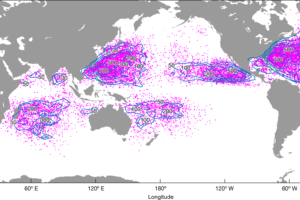The UK’s local energy networks will have to spend more of their profits to boost the electricity grid after Ofgem refused to allow any further rises in household bills for investment.
The watchdog has confirmed a five-year investment package for the UK’s electricity distribution network companies, with the aim of boosting green energy across the country.
Ofgem has confirmed this investment will be delivered without any increase in network charges on bills, which will remain at an average of £100 per year per bill-payer.
It is also contingent on the networks supporting the shift from a high dependence on imported fossil fuels towards using more homegrown renewable energy.
The watchdog’s is looking to boost the green revolution and wants the the six companies covering the country’s 14 local networks to deliver cheaper, cleaner and more reliable local grids.
The package, known as RIIO-ED2 (Revenue = Incentives + Innovation + Outputs for electricity distribution), sets the level of investment Ofgem allows local electricity distribution networks to make during the 2023-28 period.
The cost of the work is recouped through the network charges on consumer bills and by limiting network profits.
Meanwhile, the potential of renewable energy sources such as wind, solar, and wave power will require changes in the way energy is used and stored to gain their benefits.
This means the regulator has also established price controls to allow for the scale of investment required without adding to customers’ bills.
Investment crucial to meet energy demand
Akshay Kaul, Ofgem Interim Director for infrastructure and security of supply argued that it was essential Britain was “no longer at the mercy of international energy prices or geopolitical events.”
This follows a vast increase in wholesale prices driven by a Russian supply squeeze on Europe’s gas flows.
It also comes after the UK unveiled its energy security strategy in April this year, committing to a huge ramp up in nuclear, solar, wind and hydrogen power.
He said: “The economics of energy have shifted with home-grown cleaner renewables like wind and solar energy proving cheaper than costly imported gas. Together with more nuclear and potentially hydrogen fuelled power, these renewables will contribute to a lower carbon energy mix, better protected from geopolitical events and energy price shocks.”
He argued these low carbon sources of generation will have to be connected to an expanded electricity network to meet growing demand for electricity.
This includes both millions more electric heat pumps in homes and electric vehicles on the road over the coming years.
He added: “We’ve carefully considered all the work that will be required and set the budget for the networks, accordingly, driving the increase in capacity needed for net zero as well as delivering more reliable and resilient networks, at no extra cost to consumers.”
There will now be a statutory consultation on the licence modifications required to implement the RIIO-ED2 settlement in December 2022m followed by confirmation of the licences and associated price control financial instruments in February 2023.
The RIIO-ED2 price control will commence on 1 April 2023.
The boss of National Grid, John Pettigrew, recently warned the UK will have to build around seven times as much infrastructure over the current decade as it has constructed in the past 32 years to meet the country’s renewable energy goals,
This would require vast changes to the planning system.
He told City A.M.: “The UK Government has talked about halving the lifetime it takes for planning. That’s going be really important, if we’re going to build infrastructure in a timely fashion.”
Source : CITY .A.M











Add Comment